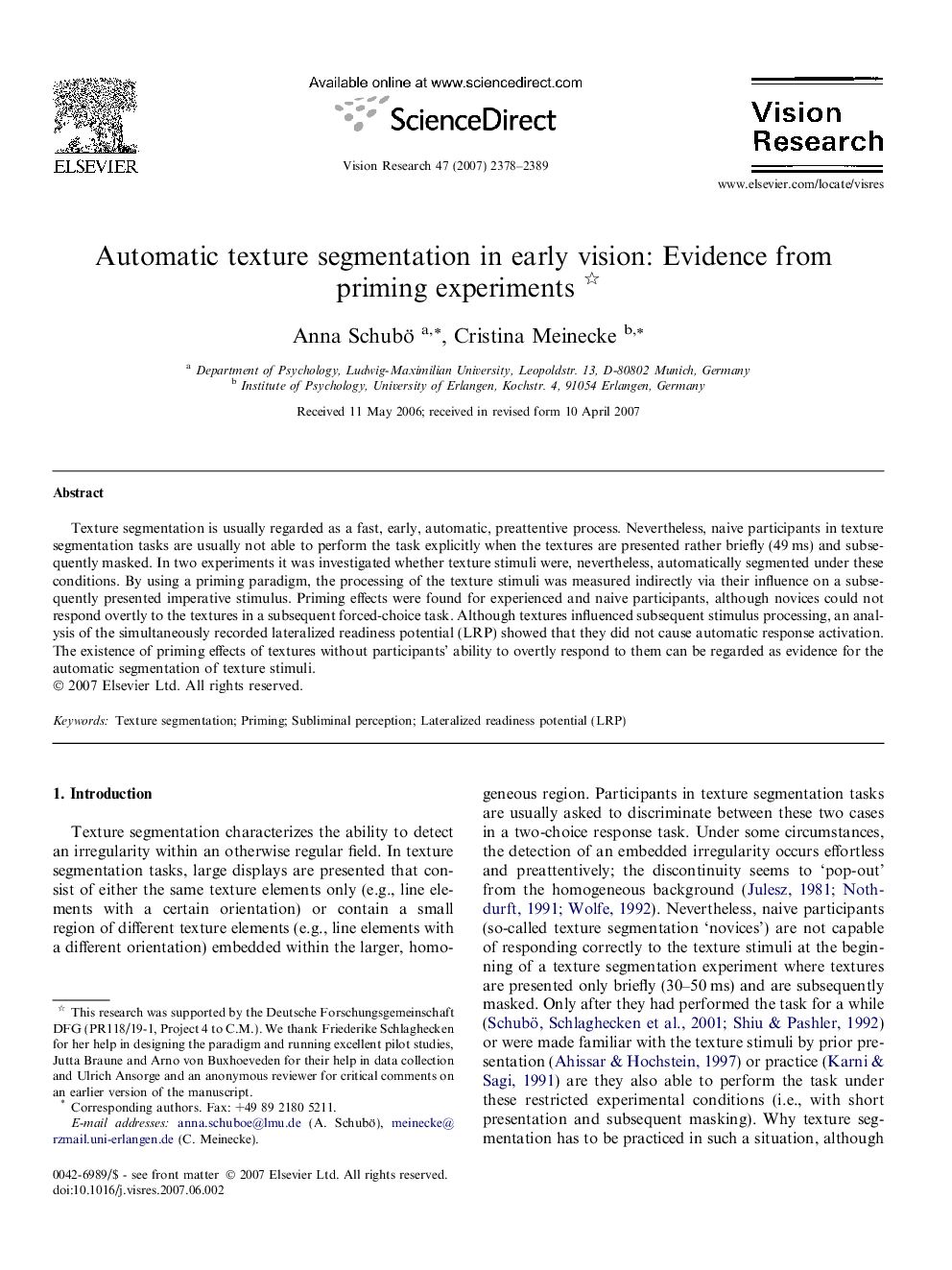| Article ID | Journal | Published Year | Pages | File Type |
|---|---|---|---|---|
| 4035654 | Vision Research | 2007 | 12 Pages |
Texture segmentation is usually regarded as a fast, early, automatic, preattentive process. Nevertheless, naive participants in texture segmentation tasks are usually not able to perform the task explicitly when the textures are presented rather briefly (49 ms) and subsequently masked. In two experiments it was investigated whether texture stimuli were, nevertheless, automatically segmented under these conditions. By using a priming paradigm, the processing of the texture stimuli was measured indirectly via their influence on a subsequently presented imperative stimulus. Priming effects were found for experienced and naive participants, although novices could not respond overtly to the textures in a subsequent forced-choice task. Although textures influenced subsequent stimulus processing, an analysis of the simultaneously recorded lateralized readiness potential (LRP) showed that they did not cause automatic response activation. The existence of priming effects of textures without participants’ ability to overtly respond to them can be regarded as evidence for the automatic segmentation of texture stimuli.
